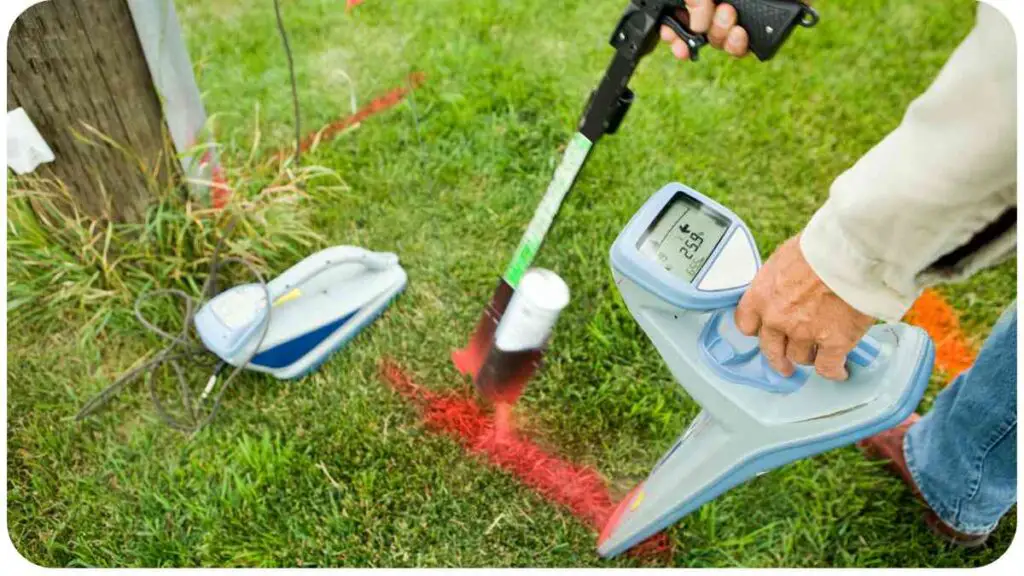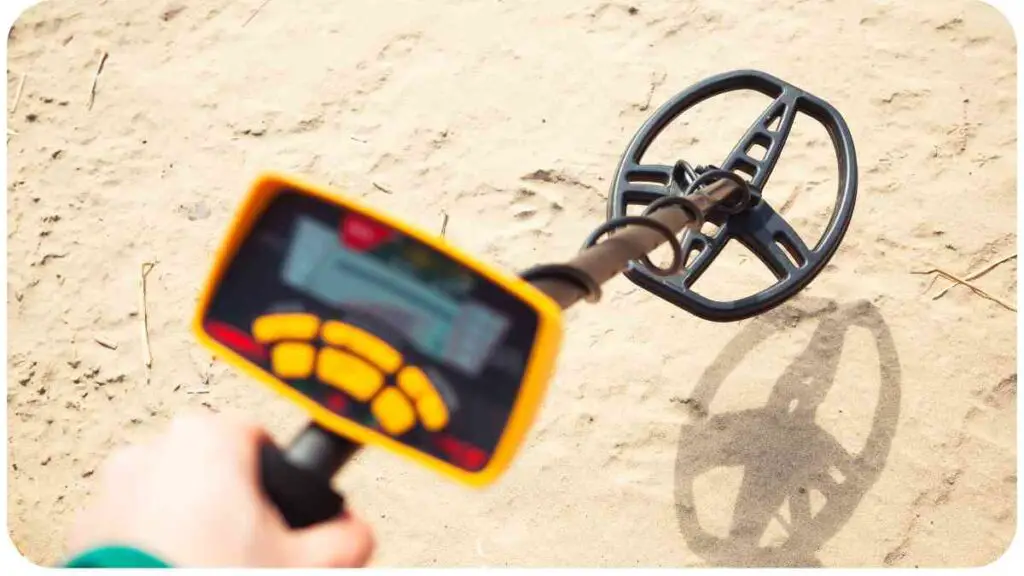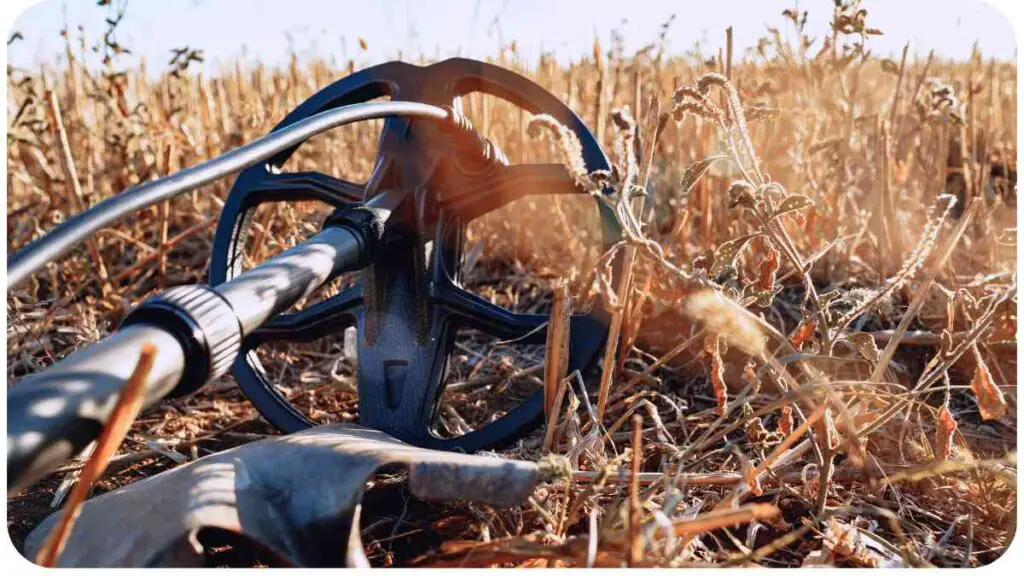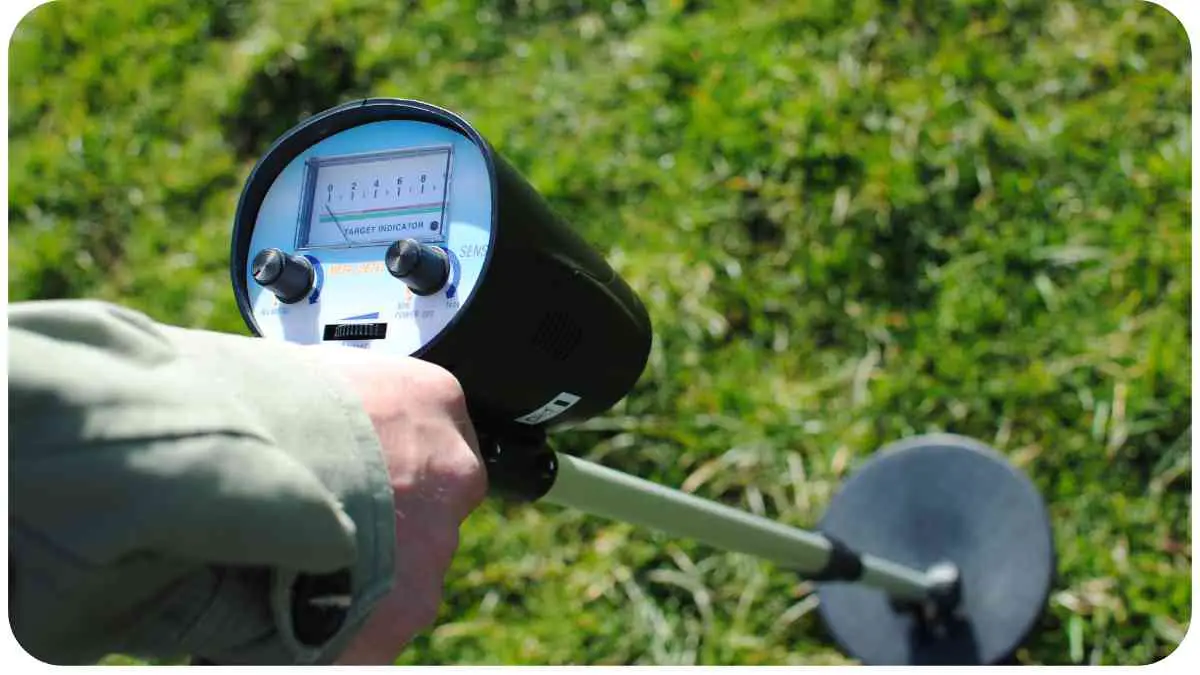Welcome to the world of metal detecting, where the search for hidden treasures can be exciting and rewarding. Metal detectors are essential tools that detect metallic objects buried beneath the ground or concealed within other materials.
In this article, we will delve into the different types of metal detectors available, explore their features and applications, and provide valuable insights into effectively using and maintaining these devices.
| Takeaways |
| Types of Metal Detectors are important to understand for effective metal detecting. |
| Discrimination, sensitivity, ground balance, size and weight, and target ID are key features to consider when choosing a metal detector. |
| Different applications, such as treasure hunting, gold prospecting, relic hunting, and beach detecting, require specific metal detector models. |
| Proper swing technique, target recovery, and digging techniques contribute to successful metal detecting. |
| Regular maintenance and care are essential to keep your metal detector in optimal condition. |
| Respecting private property rights, obtaining permission, and following local regulations ensure responsible metal detecting. |
How Metal Detectors Work
To better understand metal detectors, it is important to grasp their underlying principle of operation. Metal detectors work by utilizing electromagnetic fields to detect the presence of metallic objects. When a metal object comes close to the detector’s coil, it disturbs the electromagnetic field, resulting in a signal response that alerts the user of a potential target.
Enhance your treasure-hunting prowess with expert tips and tricks. Uncover hidden gems and master the art of metal detecting for an enriched exploration experience.
Types of Metal Detectors
Metal detectors can be categorized into different types based on their operating principles. Let’s explore the three main types:
3.1 Very Low Frequency (VLF) Detectors
VLF detectors are the most common type of metal detectors used today. They operate by transmitting and receiving electromagnetic fields at various frequencies. VLF detectors are highly versatile and suitable for a wide range of applications, from treasure hunting to relic hunting. They are favored for their ability to discriminate between different types of metals, allowing users to focus on valuable targets.
| Brand | Model | Frequency Range | Depth Range |
| Garrett | Ace 250 | 6.5 kHz – 6.7 kHz | Up to 8 inches |
| Minelab | Equinox 800 | 5 kHz – 40 kHz | Up to 12 inches |
| Fisher | F22 | 7.69 kHz | Up to 9 inches |
3.2 Pulse Induction (PI) Detectors
PI detectors utilize a single coil that generates quick and powerful pulses of current. These detectors are best suited for searching in highly mineralized soil and areas with high metal content. Pulse induction detectors are known for their ability to detect valuable targets at impressive depths, making them popular among gold prospectors and those searching for deeply buried treasures.
Embark on your metal-detecting journey with essential insights on getting started. This comprehensive guide ensures a smooth introduction to the world of treasure hunting for beginners.
| Brand | Model | Frequency Range | Depth Range |
| Minelab | GPX 5000 | Not applicable | Up to 3 feet |
| Garrett | ATX | Not applicable | Up to 10 feet |
| White’s | TDI-SL | Not applicable | Up to 6 feet |
3.3 Beat Frequency Oscillation (BFO) Detectors

BFO detectors are the simplest and most affordable type of metal detectors. They generate continuous wave frequencies and are adept at detecting larger metal objects at shallow depths. While they lack the sophisticated features of other types, BFO detectors can be a great starting point for beginners.
| Brand | Model | Frequency Range | Depth Range |
| Bounty Hunter | Gold Digger | Not applicable | Up to 2 feet |
| Tesoro | Compadre | Not applicable | Up to 1 foot |
Let’s continue exploring the different types of metal detectors and move on to discussing the important features to consider when choosing the right metal detector for your specific needs.
Discover the top-rated metal detectors catering to beginners; explore the best choices for a successful treasure-hunting experience. Make informed decisions and elevate your metal-detecting adventures.
Features to Consider When Choosing a Metal Detector

When selecting a metal detector, it’s crucial to take into account various features that can significantly impact your detecting experience. Here are some key features to consider:
4.1 Discrimination
Discrimination refers to a metal detector’s ability to distinguish between different types of metals. Some detectors offer adjustable discrimination settings, allowing you to filter out unwanted metals and focus on valuable targets. This feature is particularly important if you are treasure hunting in areas littered with trash or searching for specific types of metals.
4.2 Sensitivity
The sensitivity of a metal detector determines its ability to detect small or deeply buried targets. A higher sensitivity setting enables the detector to detect smaller objects but may also lead to more false signals from mineralized soil or interference. Finding the right balance of sensitivity is crucial for maximizing your success in metal detecting.
Address issues and optimize the performance of your Garrett AT Max with troubleshooting tips. Ensure your metal detector functions at its best with practical solutions and expert advice.
4.3 Ground Balance
Ground balance is essential for accurate target detection, especially in areas with high mineralization. This feature enables the detector to adjust for the mineral content in the soil, reducing false signals caused by mineral interference. Some detectors offer automatic ground balancing, while others allow you to manually adjust the settings based on the soil conditions.
4.4 Size and Weight
The size and weight of a metal detector can significantly affect your comfort and convenience during long detecting sessions. Consider the length of the detector’s shaft and its weight to ensure it is suitable for your height and physical abilities. Additionally, look for a detector that is easy to assemble, disassemble, and transport, especially if you plan to take it on outdoor adventures.
4.5 Target ID
Advanced metal detectors often feature a target identification function, which provides information about the type of metal detected. This feature can help you differentiate between valuable targets and common items like bottle caps or nails. Target ID is typically displayed via numerical values or on a graphical interface, helping you make informed decisions about whether to dig or not.
Now that we have explored the key features to consider, let’s move on to the next section and discuss the best metal detectors for different applications.
Navigate the exciting world of metal detecting with a step-by-step guide. From setup to advanced techniques, this comprehensive resource empowers beginners to make the most of their metal detectors.
Best Metal Detectors for Different Applications
Metal detectors are versatile tools that cater to various detecting purposes. Here are some of the best metal detectors for different applications:
5.1 Treasure Hunting
If your goal is to uncover hidden treasures, a versatile and powerful metal detector like the Garrett AT Pro or the Minelab CTX 3030 will serve you well. These detectors offer excellent discrimination capabilities, allowing you to filter out unwanted targets and focus on valuable relics, coins, and jewelry.
| Brand | Model | Discrimination | Sensitivity |
| Garrett | AT Pro | Adjustable | High |
| Minelab | CTX 3030 | Adjustable | High |
5.2 Gold Prospecting
Gold prospecting requires a metal detector that excels in detecting small nuggets at significant depths. Models like the Fisher Gold Bug Pro and the Minelab GPZ 7000 are highly regarded in the gold prospecting community for their exceptional sensitivity and ability to handle mineralized soils.
| Brand | Model | Sensitivity | Ground Balance |
| Fisher | Gold Bug Pro | High | Manual and Automatic |
| Minelab | GPZ 7000 | Extreme | Auto |
5.3 Relic Hunting
Relic hunting often involves searching in areas with high iron content and diverse metal objects. Metal detectors like the XP Deus and the Whites Spectra V3i offer advanced discrimination features, allowing you to differentiate between valuable relics and common iron debris.
| Brand | Model | Discrimination | Target ID |
| XP | Deus | Adjustable | Numerical |
| Whites | Spectra V3i | Adjustable | Graphical |
5.4 Beach Detecting
Beach detecting presents unique challenges due to the mineralized sand and water conditions. Metal detectors with excellent saltwater capabilities, such as the Minelab Equinox 800 and the Garrett Sea Hunter Mark II, are highly recommended for effective beach detecting.
| Brand | Model | Saltwater Capabilities | Sensitivity |
| Minelab | Equinox 800 | Yes | High |
| Garrett | Sea Hunter Mark II | Yes | High |
How to Use a Metal Detector Effectively
Using a metal detector efficiently requires a combination of proper techniques and strategies. Here are some essential tips to make the most of your metal detecting adventures:
6.1 Research and Planning
Before heading out, conduct thorough research about the area you plan to search. Look for historical sites, old parks, beaches, or areas with known treasure hoards. Gathering knowledge about the location’s history can lead to more productive detecting sessions.
6.2 Proper Swing Technique
Mastering the swing technique is crucial for maximizing your chances of detecting targets. Hold the metal detector with a relaxed grip and swing it from side to side in a smooth and consistent motion. Ensure that the coil stays close to the ground, approximately one to two inches above the surface.
6.3 Target Recovery
When you receive a signal, use pinpointing techniques to determine the exact location of the target. Slowly move the metal detector from side to side and pay attention to the location where the signal is the strongest. Once you determine the target’s location, dig a small plug and use a handheld pinpointer to precisely locate the target within the plug.
6.4 Digging Tools and Techniques
Invest in a good-quality digging tool, such as a sturdy trowel or shovel, to make the digging process easier and more efficient. When digging, make sure to be mindful of the environment and respect the property you are searching. Dig a clean and neat hole, and always replace the soil and turf properly after retrieving your target.
Now that you’re equipped with essential tips to use a metal detector effectively, let’s move on to the next section and discuss maintenance and care tips to ensure the longevity and optimal performance of your detector.
Maintenance and Care Tips for Metal Detectors

To keep your metal detector in top condition and extend its lifespan, consider the following maintenance and care tips:
- Regularly clean your metal detector, removing dirt and debris from the coil, control box, and other components. Use a soft cloth or brush to avoid scratching the surfaces.
- Avoid exposing your detector to extreme temperatures, high humidity, or wet conditions. Store it in a cool, dry place when not in use.
- Check the batteries regularly and replace them when needed to maintain consistent performance.
- Periodically inspect the cables and connectors for any signs of damage or wear. Replace any faulty parts to prevent further issues.
- Familiarize yourself with the manufacturer’s guidelines and recommendations for maintenance and care specific to your detector model.
By following these maintenance and care tips, you can ensure that your metal detector continues to serve you well and provide accurate and reliable results.
In the next section, we will discuss metal detecting etiquette and legal considerations to make your detecting experiences enjoyable and respectful.
Metal Detecting Etiquette and Legal Considerations
As responsible metal detectorists, it’s crucial to practice good etiquette and abide by the laws and regulations pertaining to metal detecting. Here are some important points to consider:
8.1 Respect Private Property Rights
Always seek permission before metal detecting on private property. Obtain the landowner’s consent and adhere to any specific guidelines they may have. Leave the property as you found it and report any significant finds to the landowner if requested.
8.2 Obtain Permission
When metal detecting in public parks, beaches, or other public areas, check for any rules or regulations regarding metal detecting. Some areas may require permits or have restricted areas where detecting is not allowed. Respect these rules to avoid any legal issues.
8.3 Fill in Holes Properly
After digging a target, ensure to refill the hole properly. Use the plug or dig as minimally as possible to minimize surface disruption and avoid potential hazards for others. Leave the area clean and free of any trash or debris.
8.4 Dispose of Trash Responsibly
While metal detecting, you may encounter trash and debris. Always dispose of it in designated trash receptacles or take it with you to properly dispose of later. Help maintain the integrity of the environment by leaving it cleaner than you found it.
8.5 Follow Local Regulations
Familiarize yourself with any local, state, or national regulations that govern metal detecting. Ensure you are aware of any cultural heritage sites, protected areas, or historical landmarks where metal detecting is prohibited. Respecting these regulations preserves our cultural heritage and protects sensitive sites.
Now that we have discussed metal detecting etiquette and legal considerations, let’s move on to the conclusion of our article.
Conclusion
In conclusion, understanding the different types of metal detectors is essential for any budding or experienced metal detectorist. By choosing the right type of detector based on your application and considering important features, you can enhance your detecting experience and increase your chances of finding valuable targets.
Further Reading
Here are some additional resources you can explore to learn more about metal detectors:
- Industrial Metal Detectors on GlobalSpec: This article provides an overview of industrial metal detectors and their various applications in different industries.
- Types of Metal Detectors on Gold Master: Discover the different types of metal detectors available in the market, including their features and usage in various detecting scenarios.
- Guide to Types of Metal Detectors on Tech Metals Research: This comprehensive guide dives into the different types of metal detectors, their technologies, and the specific applications they excel in.
FAQs
Q: How do metal detectors work?
A: Metal detectors work by generating a magnetic field and detecting the disturbances caused by metallic objects within that field. When a metal object comes close to the detector’s coil, it creates an electromagnetic response, triggering an audible or visual signal.
Q: What are the different types of metal detectors?
A: There are various types of metal detectors, including VLF (Very Low Frequency), PI (Pulse Induction), BFO (Beat Frequency Oscillation), and multi-frequency detectors. Each type operates based on different principles and is suitable for specific applications.
Q: Can metal detectors detect all types of metals?
A: Metal detectors can detect various types of metals, including ferrous and non-ferrous metals. However, some detectors offer discrimination features that allow you to filter out specific types of metals based on their conductivity or other properties.
Q: Can metal detectors find gold?
A: Yes, metal detectors can detect gold. However, not all detectors are equally effective at finding gold nuggets. Some detectors designed specifically for gold prospecting offer higher sensitivity to small gold particles or nuggets buried at greater depths.
Q: Do I need a permit to use a metal detector?
A: The need for a permit depends on the location where you plan to use the metal detector. Private properties require permission from the landowner, and some public areas may have specific rules or permit requirements. It’s important to research and understand the local regulations and obtain the necessary permits when applicable.

Hi there! My name is Hellen James, and I’m here to talk to you about treasure hunting. I’ve been a fan of treasure hunting ever since I was a kid, and if you’re a fan of treasure hunting or just like the idea of finding a long-lost fortune, then this blog is for you.

